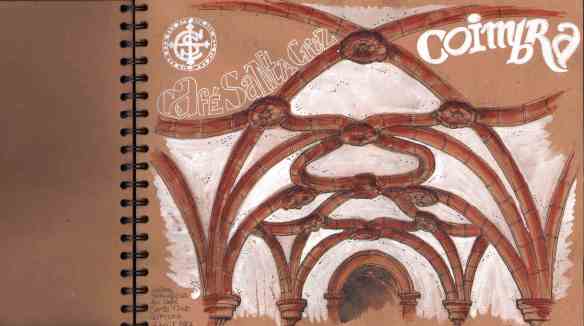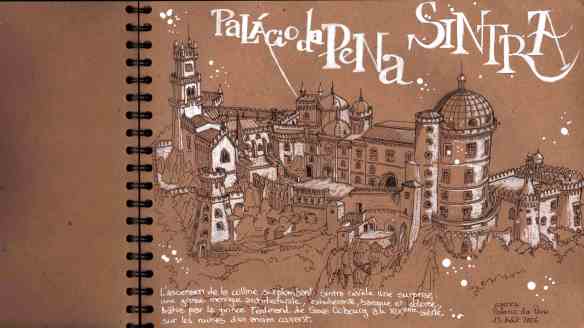 Danny Gregory is an outstanding author of internationally best-selling books on art and creativity (Everyday Matters, An Illustrated Life, An Illustrated Journey, etc). He is blogging and giving a lot of conference on Art and drawing and his illustrations have appeared in the New York Times and many other publications and books.
Danny Gregory is an outstanding author of internationally best-selling books on art and creativity (Everyday Matters, An Illustrated Life, An Illustrated Journey, etc). He is blogging and giving a lot of conference on Art and drawing and his illustrations have appeared in the New York Times and many other publications and books.
I felt really humbled when he invited me to publish some of my drawings in his latest publication on travel sketching, An Illustrated Journey and enjoyed the collaboration with him.
Now, creative Danny has launched a new online venture, Sketchbook Skool, an online course on creativity and illustrated journaling he created with Koosje Koene. If I remember well, I registered at this Skool the very day he announced it. And since then i have never regretted my $99 investment.
But Danny is not only a brilliant artist, he is also a wonderful story teller. He wrote an amazing post on this inner monkey voice in you head that always find good reasons to distract you from what you really want to achieve. I loved it. I loved it so much that I took the liberty to borrow his idea during this first Skool semester, and post along with my sketches, my dialogs with my monkey voice.
So, back home after a intensive day of work, I take a pen, read those few lines, and then start doodling ?
« But don’t worry about that now. It’s time to silence the voice.
Because it can be hushed. It can be beaten.
The secret is so easy, so simple, it took me ages to figure it out. I tried fighting back, debating, fresh approaches, corroborating opinions. But the answer, plain is simple, is to out-dumb it. To not look but just leap. To make not a plan but a move. To get the lead, or the ink, out. Now.
I pick up a pen and mindlessly start to draw. I don’t try to figure out what I’m drawing. I don’t consider the anatomy of the eyeball or the laws of light reflection or where the vanishing point should be. I don’t think about whether my proportions are off, or whether the subject is interesting, or whether my butt is falling asleep, or if the ink is soaking through the paper.
I am the whistling mule, head down, shoulder to the plow, just here to draw, ma’am, pushing the pen on and on. If the voice clambers out of its grotto and starts to harangue me, I switch to humming and I keep pushing that pen. And when the drawing is done, I don’t stop to look at it, I don’t evaluate it or make a few changes. I turn the page and I start the next one. I am not here to have drawn, I am here to be drawing.
And after a couple of pages, the voice has fallen silent. Given up because it is a bully and it can’t face defeat. Poor little ape. See you tomorrow. »
In the first lesson, Danny’s pushed the idea to forget about pencils to be more focused on the topic you’re drawing and the emotion you want to catch. To be sure the first page of my sketchbook would be nice (A tough problem every sketchbooker knows well), i choosed to draw it on a separate sheet of paper and stick it in my book. Just in case I really missed the drawing. I used a kraft wrapping paper from a retailing store (Fnac) and used directly white gouache with a brush, trying to sketch in no more than 40mns. And then i tore the paper before sticking it.
That likeness doesn’t really looks like Danny’, because i couldn’t use a pencil first, but it helped me hush the monkey trinig to tell me the final drawing is going to suck.









